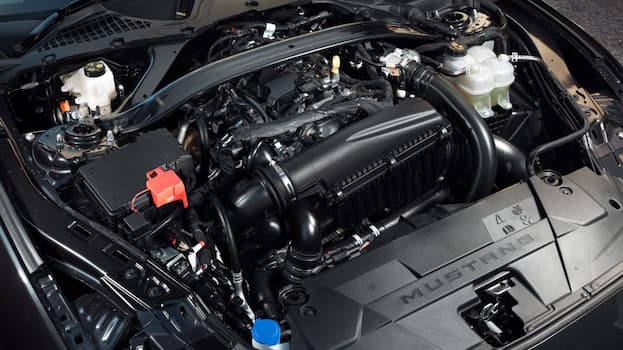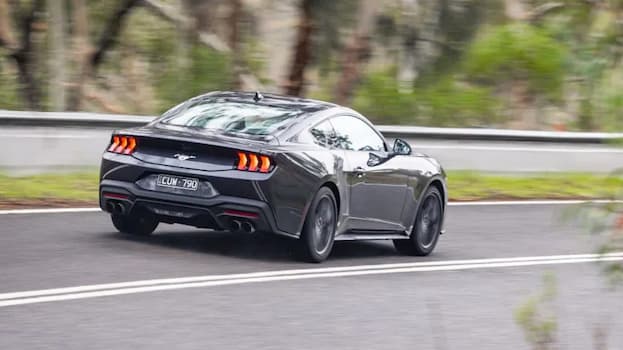Everything You Need to Know About EcoBoost Performance Parts
First introduced in 2009 as a 3.5-liter twin-turbo V6, EcoBoost engines changed the powertrain landscape and set a trend soon followed by other manufacturers. Various iterations of the boosted engine have since appeared, powering everything from behemoths like the Ford F-150 and GT to the minute 1-liter Fiesta across the pond.
All engines are known for high power output, especially compared to naturally-aspirated mills they directly compete with, more low-end torque and the undeniable fun factor when the turbo kicks in. Still, the engines can be upgraded with countless quality EcoBoost performance parts to drain the last drop of power on tap.
This includes everything from air intakes and aftermarket exhausts to improve airflow in and out of the engine, intercoolers to keep temperatures sane and blow-off valves to keep the turbo healthy when there’s excess boost pressure. These power additions can also be paired with handling aero upgrades, including coilovers at the front and rear axles to contain body roll in corners, and revised body kit components to push more air down and increase grip through the tires.
Why Have Aftermarket Air Intakes Strapped to Your EcoBoost Engine?

One of the main highlights of early EcoBoost engines was comparable power to bigger-displacement V6 and V8 engines while still staying within strict emissions and noise regulations. As such, the tubing in the factory intake is in narrower diameters, includes multiple bends that restrict airflow and doesn’t benefit from the subpar plastic build.
All this hurts potential power and longevity. Aftermarket air intakes go with wider and straighter piping, sitting lower and closer to the bumpers to increase airflow and push more oxygen rich air. And they include heat shields to prevent heat soak from surrounding engine parts. Additionally, a considerable improvement are the beefier cone filters to keep the engine clear of airborne contaminants and prevent internal engine damage.
Real-world benefits, besides the cleaner, engineered looks, are increased power, with 10 to 20 horses in the V6 configurations, a deeper and throatier engine intake sound, better filtering with reduced maintenance (and filter changes) and most importantly, a car that’s more responsive on the throttle for faster acceleration and effortless overtaking.
Pair Intakes with Bigger, More Efficient Intercoolers

The early 3.5-liter EcoBoost had condensation intercooler issues leading to misfires, stalling and reduced boost pressure. Ford solved the issue with revised designs in subsequent versions of the engine. Still, for improved power delivery and cooling of compressed air, consider aftermarket intercoolers, complete with bigger-capacity cores, sturdier metal builds, wider inlet and outlet valves and bigger, cast end tanks for improved airflow. The end result is high power from cooler compressed air, reduced heat soak, better efficiency and the ability to strap on a bigger, faster-spooling turbo assembly in further upgrades.
Better Airflow with Aftermarket Exhausts

Stock EcoBoost engines aren’t fitted with performance exhaust systems. Possibly as part of cost-cutting measures to keep overall car prices affordable. This, however, goes against the main purpose of a boosted, high-power engine. When fitting cold air intakes and bigger intercooler assemblies to push more air into the engine, also consider the benefits of wider, better built exhaust piping.
These are necessary to urge spent gases out of the system faster and in higher volumes, resulting in even better engine efficiency at the intake end. Aftermarket exhausts are the EcoBoost performance parts that solve issues with the increased backpressure in stock systems. This lingering gas hurts power and performance by effectively choking the engine and preventing it from taking its next breath.
Performance variants in turbo-back designs additionally get more power and torque done to the wheels, help with turbo spooling and improve exhaust scavenging with revised downpipe designs to draw spent gases faster out of the combustion chamber. Estimates are that the wider piping in optimized configurations can add up to 10 per cent of overall rated power, or roughly 30-40hp in the larger-displacement 3- and 3.5-liter engines.
A major difference is how aftermarket systems are built, both in terms of the materials used and the production methods they undergo. High-grade stainless steel piping handles increased heat and pressure, keeping it within the piping and improving performance parameters like reduced backpressure while aiding longevity.
The metal has a higher fatigue ceiling, meaning increased durability in extreme-duty use and is corrosion resistant to prevent staining and rust. Builds also diverge from simple crush-bent piping, instead relying on mandrels to retain pipe uniformity.
The production process means exhaust pipes are optimized for width and resist kinking and deformation under extreme stress, and is another factor that extends your exhaust system’s longevity. Factor in the better sound, with deeper and louder notes, and you have one of the most versatile upgrades for any engine.
Summing Up
Aftermarket Ford EcoBoost performance parts deliver the missing ingredients in already capable engines. Choose air intakes and intercoolers to deliver higher volumes or cooled air for improved combustion efficiency and pair these with performance exhaust systems to relieve the engine of spent gases.
This trio of upgrades though brings tangible benefits when working the gas. Cars and trucks have considerably snappier throttle response, get up and running faster, and with more torque, have more pulling power in reserve should you need it. To get the most out of your purchase, consider established third-party suppliers with multiple options for all EcoBoost engines.




